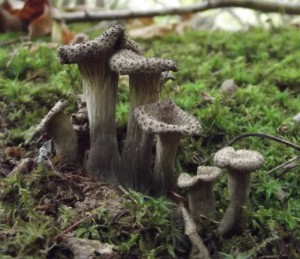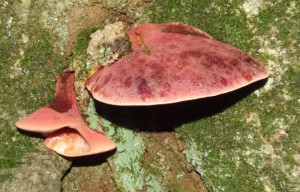Email: geoffdann@hotmail.com
Phone: 07964 569715
05/12/2013
All good things come to an end, and mushroom season 2013 has been one to remember; certainly the best since 2010, after the drought of 2011 and the washout of 2012, and better than 2010 for many species. I took my 35th and final group of the season out last Sunday (December 1st), and we were still finding winter chanterelles (Craterellus tubaeformis) in their thousands, along with a few other bits and pieces. And it is that family, the Cantherellaceae, that I’ll especially remember 2013 for. They’ve all done brilliantly – not just the chanterelles (Cantherellus cibarius) that I’ve been finding since August, the Horns of Plenty (Craterellus cornucopioides) that I’d never found in serious quantities before this year but in 2013 seemed to
turn up all over the place, the aforementioned winter chanterelles that have been even more
abundant than usual this year as well as arriving about a month early, but also the much rarer members of this family. There are quite a few of these, several of which I’ve still never seen, but this year more of them than not turned up either in people’s posts on various websites.
It has also been the best year I can remember for beefsteak fungus (Fistulina hepatica) and in late spring and early summer it was an absolute stormer for chicken of the woods (Laetiporus
sulphureus). The boletes did OK but that’s all, which was a little disappointing given their poor showing the last two years, and most species put on at least a reasonable display relative to their average frequency. It’s always a poor year for something though, and 2013 was a fallow year for the shaggy parasols, which took a rest after their stellar performance in 2012. It was also notably bad for the usually-prolific wood blewit (Clitocybe nuda), as well as many of their relatives. I didn’t see a single specimen of the deadly fool’s funnel (Clitocybe rivulosa), for example.
Details of next year’s sessions/prices, including a series of suppers/talks in the evenings, are now available from the menu above.
This will be my last blog post for a little while, because I’ve recently bought a new house and I have a lot of work to do sorting out a vegetable plot and building a pond and rockery. Enjoy your Christmas and New Year.
Geoff


